Volume 19, Issue 1
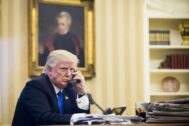
Regional Overview
January — May 2017The Pivot is Dead, Long Live the Pivot
While it hasn’t always been pretty or (gasp) consistent, US Asia policy under the Trump administration is, with one major exception, pretty much where the Obama administration left it. America’s Asian alliances remain the foundation of its security strategy and “our one-China policy” has been reaffirmed. Even regarding North Korea, the objective – bringing Kim Jong Un “to his senses” – remains the same, although the approach seems to display less patience. The exception centers on the one promise that Trump (regrettably in our view) has kept: abandonment of the Trans-Pacific Partnership (TPP). On economic policy more generally, the promised trade war with China has (thus far) failed to materialize since “the Chinese have made some improvements on currency in recent months”; okay, Chinese currency manipulation actually stopped several years ago, but you get the point. While the search for a new buzz word to replace the “pivot” or “rebalance” continues, the vice president and secretaries of State and Defense have been to the region and the White House has confirmed President Trump’s plan to attend a trio of regional summits this fall. Asia remains a high priority region, for better and for worse.
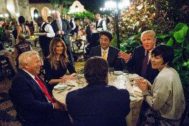
US - Japan
January — May 2017Tokyo Transitions to Trump
The transition to the new Trump administration was far smoother for Japan than for other US allies. Prime Minister Abe Shinzo’s visit to Trump Tower the week after the election in November undoubtedly helped smooth the way, and his visit in February proved to be a successful confirmation of Tokyo’s highest priorities for alliance cooperation. Secretary of Defense James Mattis and Secretary of State Rex Tillerson both headed to Northeast Asia, reassuring Tokyo and Seoul of the administration’s commitment to its Asian allies. This early effort helped ensure continuity rather than disruption would be the theme for the US-Japan alliance for the next four years. North Korea, of course, helped that return to normalcy. Yet not all was settled in these early months. How the new administration was going to define its approach to trade remained ill-defined. The Japanese government, however, was not interested in a conversation that focused only on trade.
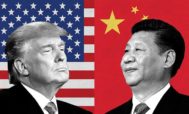
US - China
January — April 2017Trump and Xi Break the Ice at Mar-a-Lago
The US-China relationship got off to an active, albeit fitful start after Donald Trump assumed the presidency on Jan. 20. Once Trump agreed to honor the US “one China” policy, Chinese officials engaged positively with their US counterparts, and planning began for the inaugural Trump-Xi meeting. China’s top diplomat, Yang Jiechi, visited Washington at the end of February, and Secretary of State Rex Tillerson traveled to Beijing in mid-March. The highlight of this period was the Trump-Xi summit, which took place at Mar-a-Lago on April 6-7. One of the major summit deliverables was the creation of a new high-level mechanism, the US-China Comprehensive Dialogue, which will be overseen by Trump and Xi. North Korea emerged as the pressing issue for the Trump administration as well as in the bilateral US-China relationship. Trump apparently made clear to Xi that if China is unwilling to cooperate, the US would seek to solve the North Korea threat unilaterally, including by pursuing penalties against Chinese banks and companies doing business with North Korea. After the summit, Trump called Xi twice to discuss North Korea and to urge him to put greater pressure on Pyongyang.
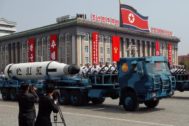
US - Korea
January — April 2017Peninsula Tensions Spike
North Korea tested President Trump’s new administration with a New Year promise of imminent ICBM capability and subsequent missile launches. Tensions rose to the highest level since 1993/1994 with missile launches, the assassination of Kim Jong Nam, and a possible ICBM on display at a military parade to celebrate the 85th anniversary of the DPRK’s Korean People’s Army. Washington offered Seoul assurances of support, sending Defense Secretary Mattis, Secretary of State Tillerson, and Vice President Pence in early 2017. Yet, Trump’s comments about sending an “armada” with the dispatch of the USS Carl Vinson carrier strike group led South Koreans to fear blowback if the US conducted a preemptive or preventive strike against DPRK facilities. South Korea saw deployment of the first stages of THAAD, but the missile defense system and broader policy differences with May 9 ROK presidential victor Moon Jae-in will be challenges for US-South Korea relations.
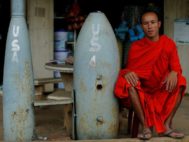
US - Southeast Asia
January — April 2017Mixed Messages
In its early months, the Trump administration has devoted little attention to Southeast Asia and US relations with the region have generally followed a trajectory set by the Obama administration. The US continued naval operations in the South China Sea and joint exercises with most ASEAN states with US air and naval forces rotating through bases in northern Australia and the Philippines and deploying from Singapore. There have been mixed signals between Manila and Washington. With the ASEAN states and China moving toward completion of a Code of Conduct (COC) on rules of engagement in the South China Sea, it is hoped that the new document would be “legally binding,” but little specific about its provisions has been published. Following Washington’s abrogation of the Trans-Pacific Partnership (TPP), Hanoi has sought to alleviate its disappointment, saying that it understands the US need to create more jobs and that it will try to accommodate Washington in future trade negotiations.
During the Obama administration’s two terms (2009-2016), the president’s “rebalance” to Asia featured Southeast Asia as its centerpiece. President Obama made 11 separate trips to the Asia-Pacific, visiting a total of 14 countries, nine of which were members of ASEAN. His secretaries of state and defense also made multiple journeys to the region. Among many successes during these years were US accession to ASEAN’s Treaty of Amity and Cooperation, participation in the East Asia Summit for the first time in 2011, the establishment of the first diplomatic mission to ASEAN, and realization of the historic transition to democracy in Myanmar. The United States also increased the deployment of ships and aircraft to the region, particularly in Singapore, the Philippines, and Australia. In Obama’s final year, the US began distributing resources under the Maritime Security Initiative to assist Southeast Asian countries with their maritime domain awareness by transferring patrol vessels and surveillance aircraft as well as creating a system whereby these countries could share information on the region’s maritime security picture.
While it’s still early for the Trump administration, there have been virtually no policy statements dealing with Southeast Asia, nor at this time (April) has the State Department chosen a deputy secretary – the number two position – or a permanent assistant secretary for East Asian and Pacific affairs. Direction from Washington for a region that was so important during the preceding eight years seems to be absent.
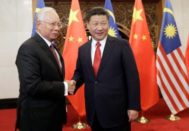
China - Southeast Asia
January — April 2017China Consolidates Control and Advances Influence
Chinese officials showed confidence and satisfaction that the cooling tensions in the South China Sea demonstrated increasing regional deference to Beijing’s interests while China’s economic importance to Southeast Asia loomed larger in a period of anticipated international retrenchment. They remained alert to possible actions by the United States, Japan, Australia and South China Sea claimant states that might upset the recent positive trajectory, but generally saw those states preoccupied or otherwise unwilling to push back strongly against Chinese ambitions. The way seemed open for steady consolidation and control of holdings and claimed rights along with a Chinese supported code of conduct on maritime activity in the South China Sea, diplomatic initiatives to promote closer ties and reduce regional suspicion of Chinese intentions, and an array of economic blandishments in line with Beijing’s ambitious Silk Road programs.
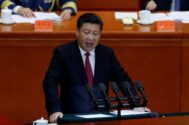
China - Taiwan
January — April 2017Adrift Without Dialogue
In February, President Trump told President Xi Jinping that the US would honor its one-China policy. This eased concern that the new administration would radically change US policy toward Taiwan, but it remains unclear how the Trump administration will deal with specific Taiwan issues. Relations between Beijing and Taipei have continued to be in an unstable but calm state in the early months of 2017. The formal channels of dialogue remain closed and no significant effort has been made to reopen them. In the meantime, practical issues have been dealt with, sometimes constructively but often in ways that exacerbate the lack of trust. This unstable and risky situation will likely continue in the months ahead.

North Korea - South Korea
January — April 2017Can Moon Restore Sunshine?
The first four months of 2017 have been a momentous and tumultuous period for Korea. As of mid-May, the peninsula remains in a state of high anxiety and no little tension. A crisis? Maybe. Yet without counseling complacency, recent history suggests that that term tends to be over-applied to this part of the world’s recurring episodes of tension: amply chronicled down the years (for the present century) in successive issues of Comparative Connections.
The reasons for this latest bout of tension are partly local but most global, or more precisely trans-Pacific. The local causes derive from both Koreas, if as usual mainly the North. During the past four months as in the previous five years, Kim Jong Un’s regime has shown little sign of a wish to lower tensions, mend fences, or even pursue normal relations with other states, friend or foe. Now in his sixth year in power, the third Kim remains unique as a 21st-century leader who in this era of globalization – and despite his own years of schooling in Europe – has neither ventured abroad nor met any other head of state or government, even on his home turf. The DPRK’s boasts of self-reliance may be mendacious on the economic front, where (as widely canvassed) Chinese sustenance remains vital. Yet diplomatically it does indeed stand alone; the more so as Pyongyang has begun bombarding even Beijing with the aggressive insults long hurled by Pyongyang at Seoul, Tokyo, and Washington. Kim seems to share the stance of Millwall FC, a notoriously ‘hard’ London soccer club whose fans chant: “No one likes us, we don’t care.” His father and grandfather were more subtle, at least in not picking fights Bruce Lee-style with all comers simultaneously. But just as success has long eluded Millwall, showing the finger to everyone can hardly work for Kim Jong Un long-term.
It is not just words that North Korea lobs. This Kim has markedly accelerated the DPRK’s development of both nuclear weapons – an unprecedented two tests in 2016, after three in the decade from 2006 – and the ballistic missiles (BM) that might one day carry them. True to form, the first four months of 2017 saw half a dozen BM tests, not all successful. Yet contra many predictions, Kim has not (so far) marked the recent transitions of political power in two of his main foes – Washington first, and now Seoul too – with a nuclear test; unlike in May 2009 when Barack Obama faced that challenge, or February 2013 when a nuclear blast greeted both the re-elected Obama and the incoming Park Geun-hye. Still, with most of 2017 to go, it might be premature to seek to explain what may be a temporary non-event.
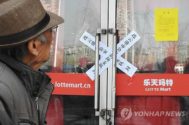
China - Korea
January — April 2017Two Koreas Defy Chinese Sanctions
Pyongyang tested regional and domestic politics on six separate occasions by conducting missile launches between February and April. The latest tests coincided with the Xi-Trump summit in Mar-a-Lago and Vice President Pence’s visit to South Korea. They also marked the 105th birth anniversary of Kim Il Sung on April 15 amid intense speculation that North Korea might conduct a sixth nuclear test. In addition to supporting five UN Security Council statements on North Korea this year, Beijing on Feb. 18 announced a suspension of DPRK coal imports through December. DPRK military threats also catalyzed US-ROK plans to deploy THAAD, a source of mounting tension that affected all aspects of the China-South Korea relationship. Beijing’s retaliation took the form of restrictions from March on business and tourism. South Korea appealed to the WTO for redress and South Korean lawmakers passed resolutions condemning China’s retaliation. THAAD emerged at the center of domestic political debate in Seoul after Park Geun-hye’s ousting on March 10, following which PRC nuclear envoy Wu Dawei in April engaged major presidential contenders ahead of the May 9 elections. Beijing’s falling out with both Koreas presents a major challenge for coordinating regional policy with new administrations in Washington and Seoul.
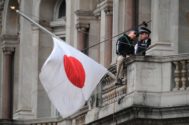
Japan - China
January — April 2017No Pyrotechnics, No Progress
Though free of the large-scale anti-Japanese demonstrations and acerbic exchanges that have characterized the recent past, the cold peace between China and Japan continued in the early months of 2017. There were no meetings of high-level officials, and none were scheduled. Mutual irritants continued on familiar topics: defense and territorial issues, Taiwan, trade and tourism, and textbooks and history.

Japan - Korea
January — April 2017Running on Rivalry: Presidential Hopefuls Capitalize on Disputes
With South Korean presidential election scheduled for May 9, the early months of 2017 witnessed not only avid campaigning by candidates, but also a deepening diplomatic conflict between Seoul and Tokyo. In particular, the installation of a “comfort woman” statue facing the Consulate General of Japan in Busan last December perturbed bilateral relations, calling into question the landmark “comfort women” agreement. While the anticipated installations of additional statues by provincial and civic actors risked escalating tensions further, the presidential candidates have made nominal efforts to quell the concerns of Japanese diplomats. As the Blue House prepares to greet its new occupant, prospects for a significant turnaround in bilateral relations remain uncertain.
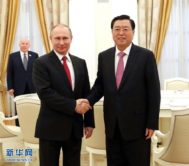
China - Russia
January — April 2017Trilateral Politics: Trump Style
US relations with Russia and China flip-flopped in the first few months of 2017 as newly-inaugurated President Donald Trump injected fresh dynamics into the Washington-Beijing-Moscow triangle. In just one strike (the missile attack on Syria) with nearly “perfect” timing in early April, the Washington “outsider” surprised the visiting Chinese president, minimized the “Russian factor” in US domestic politics, and assumed the moral high ground while sending a strong signal to a still defiant North Korea. While the long-term effect of Trump’s action has yet to be determined, it did set in motion diplomatic maneuvering and mind games between Washington, Moscow, and Beijing. For the first time since the end of the Cold War, Washington, or more precisely Trump, was actively and dramatically pulling the strings of this “not-so-strategic triangle.” However, before anything substantial happened to the triangle, the Korean nuclear crisis deepened and broadened, and Pyongyang assumed the characteristics of China’s “rogue ally.” To defuse this time-bomb in Northeast Asia, the three geostrategic players may need to go beyond the traditional “great games” in the age of WMD.
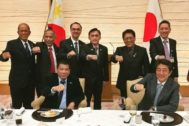
Japan - Southeast Asia
May 2016 — April 2017Both Push and Pull: Japan Steps Up in Southeast Asia
Two political surprises in 2016 will affect Japan’s relations with Southeast Asia. The first, the election of President Rodrigo Duterte in the Philippines and his subsequent turn toward China, has likely not disturbed Japan’s role as the Philippines’ largest investor, trading partner, and aid donor. However, Duterte’s abrasiveness toward Washington could have a negative effect on the newly-forged Japan-Philippines security partnership and dampen the possibility of triangulating US, Japan, and Philippine cooperation in the South China Sea. A greater and more long-term impact could be the election of Donald Trump and the resulting uncertainty in US relations with Southeast Asia. Beyond that broad concern, Trump’s withdrawal of the US from the Trans-Pacific Partnership (TPP) throws the economic architecture of the Asia-Pacific region into question and could stymie the growth Japan had expected in trade relations with TPP members in Southeast Asia, particularly Vietnam and Malaysia. In January 2017, just days before Trump’s inauguration, Prime Minister Abe embarked on a swing through Southeast Asia to make “strategic adjustments” in Japanese relations with the Philippines, Indonesia, and Vietnam.